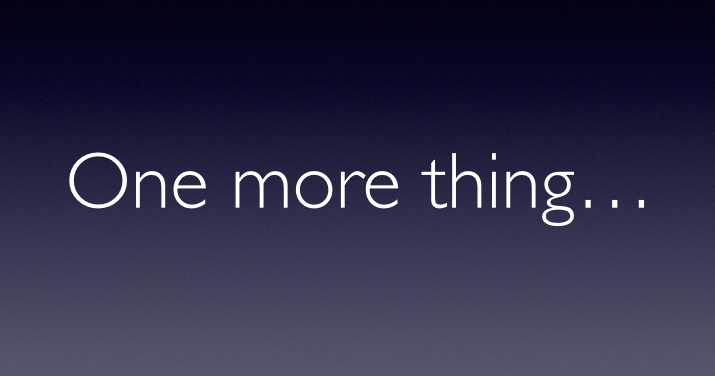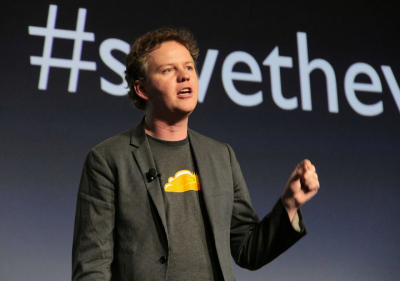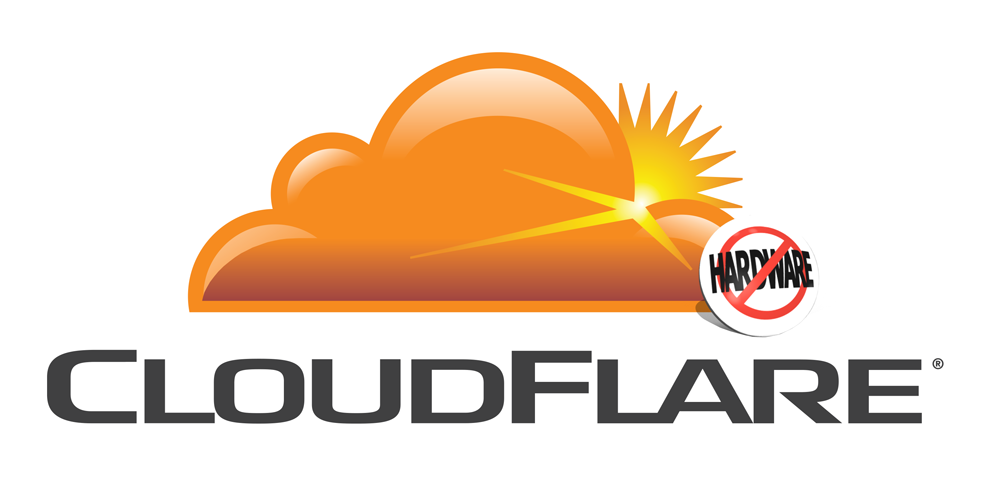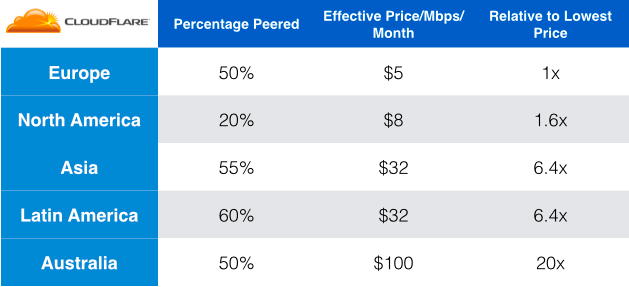Author Archives: Matthew Prince
Author Archives: Matthew Prince

I wanted to write one more thing about Keyless SSL, our announcement from last week, before attention shifts to what we'll be announcing on Monday. Keyless allows us to provide CloudFlare's service without having private SSL keys stored locally on our edge servers. The news last week focused on how this could allow very large customers, like major financial institutions, to use CloudFlare without trusting us with their private keys.
But there's another use that will benefit the entire CloudFlare userbase, not just our largest enterprise customers, and it's this: Keyless SSL is a key part of our strategy to continue to expand CloudFlare's global network.
CloudFlare's network today consists of 28 edge data centers that span much of the globe. We have technical and security requirements for these facilities in order to ensure that the equipment they house remains secure. Generally, we're in Tier III or IV data center facilities with the highest level of security. In our San Jose facility, for instance, you have to pass through 5 biometric scans, in addition to multiple 24x7 manned guard check points, before you can get to the electronically locked cabinets housing our servers.
There Continue reading

Since CloudFlare launched to the public four years ago today, we've always considered September 27th our birthday. We like to celebrate by doing something nice for our team and also for our customers. Two years ago, for example, we brought a cake into the office and then enabled free IPv6 support for all our customers.
Saturday is our birthday this year, so we decided to celebrate it a few days later when we'd all be back in the office on Monday, September 29th. That actually corresponds to the day we presented at the finals of the TechCrunch Disrupt startup contest where we launched. We ended up coming in second. Mike Arrington, the founder of TechCrunch, said we were basically "muffler repair for the Internet."
Looking back, that's actually not a bad description. At core, CloudFlare's mission is to help build a better Internet by fixing its biggest problems -- its metaphorical rusty mufflers. This year, we thought it would be great to repair a big, ugly muffler that should have been fixed a long time ago.
This Monday, we'll bring a cake into the office. (It'll have to be a lot bigger as our team has grown substantially.) Continue reading

CloudFlare is an engineering-driven company. This is a story we're proud of because it embodies the essence of who we are: when faced with a problem, we found a novel solution. Technical details to follow but, until then, welcome to the no hardware world.
The story begins on a Saturday morning, in the Fall of 2012, almost exactly two years ago. I got a call on my cell phone that woke me. It was a man who introduced himself as the Chief Information Security Officer (CISO) at one of the world's largest banks.
"I got your number from a reporter," he said. "We have an incident. Could you and some of your team be in New York Monday morning? We'd value your advice." We were a small startup. Of course we were going to drop everything and fly across the country to see if we could help.
I called John Roberts and Sri Rao, two members of CloudFlare's team. John had an air of calm about him and owned more khaki pants than any of the rest of us. Sri was a senior member of our technical operations team and could, already at that point, Continue reading

Over the last few months, there’s been increased attention on networks and how they interconnect. CloudFlare runs a large network that interconnects with many others around the world. From our vantage point, we have incredible visibility into global network operations. Given our unique situation, we thought it might be useful to explain how networks operate, and the relative costs of Internet connectivity in different parts of the world.
The Internet is a vast network made up of a collection of smaller networks. The networks that make up the Internet are connected in two main ways. Networks can connect with each other directly, in which case they are said to be “peered”, or they can connect via an intermediary network known as a “transit provider”.
At the core of the Internet are a handful of very large transit providers that all peer with one another. This group of approximately twelve companies are known as Tier 1 network providers. Whether directly or indirectly, every ISP (Internet Service Provider) around the world connects with one of these Tier 1 providers. And, since the Tier 1 providers are all interconnected themselves, from any point on the network you should be able to reach any other point. That's what makes the Internet the Internet: it’s a huge group of networks that are all interconnected.
To be a part of the Internet, CloudFlare buys bandwidth, known as transit, from a number of different providers. The rate we pay for this bandwidth varies from region to region around the world. In some cases we buy from a Tier 1 provider. In other cases, we buy from regional transit providers that either peer with the networks we need to reach directly (bypassing any Tier 1), or interconnect themselves with other transit providers.
CloudFlare buys transit wholesale and on the basis of the capacity we use in any given month. Unlike some cloud services like Amazon Web Services (AWS) or traditional CDNs that bill for individual bits delivered across a network (called "stock"), we pay for a maximum utilization for a period of time (called "flow"). Typically, we pay based on the maximum number of megabits per second we use during a month on any given provider.

Most transit agreements bill the 95th percentile of utilization in any given month. That means you throw out approximately 36 not-necessarily-contiguous hours worth of peak utilization when calculating usage for the month. Legend has it that in its early days, Google used to take advantage of these contracts by using very little bandwidth for most of the month and then ship its indexes between data centers, a very high bandwidth operation, during one 24-hour period. A clever, if undoubtedly short-lived, strategy to avoid high bandwidth bills.
Another subtlety is that when you buy transit wholesale you typically only pay for traffic coming in (“ingress") or traffic going out (“egress”) of your network, not both. Generally you pay which ever one is greater.
CloudFlare is a caching proxy so egress (out) typically exceeds ingress (in), usually by around 4-5x. Our bandwidth bill is therefore calculated on egress so we don't pay for ingress. This is part of the reason we don't charge extra when a site on our network comes under a DDoS attack. An attack increases our ingress but, unless the attack is very large, our ingress traffic will still not exceed egress, and therefore doesn’t increase our bandwidth bill.
While we pay for transit, peering directly with other providers is typically free — with some notable exceptions recently highlighted by Netflix. In CloudFlare's case, unlike Netflix, at this time, all our peering is currently "settlement free," meaning we don't pay for it. Therefore, the more we peer the less we pay for bandwidth. Peering also typically increases performance by cutting out intermediaries that may add latency. In general, peering is a good thing.

The chart above shows how CloudFlare has increased the number of networks we peer with over the last three months (both over IPv4 and IPv6). Currently, we peer around 45% of our total traffic globally (depending on the time of day), across nearly 3,000 different peering sessions. The chart below shows the split between peering and transit and how it's improved over the last three months as we’ve added more peers.

We don't disclose exactly what we pay for transit, but I can give you a relative sense of regional differences. To start, let's assume as a benchmark in North America you'd pay a blended average across all the transit providers of $10/Mbps (megabit per second per month). In reality, we pay less than that, but it can serve as a benchmark, and keep the numbers round as we compare regions. If you assume that benchmark, for every 1,000Mbps (1Gbps) you'd pay $10,000/month (again, acknowledge that’s higher than reality, it’s just an illustrative benchmark and keeps the numbers round, bear with me).
While that benchmark establishes the transit price, the effective price for bandwidth in the region is the blended price of transit ($10/Mbps) and peering ($0/Mbps). Every byte delivered over peering is a would-be transit byte that doesn't need to be paid for. While North America has some of the lowest transit pricing in the world, it also has below average rates of peering. The chart below shows the split between peering and transit in the region. While it's gotten better over the last three months, North America still lags behind every other region in the world in terms of peering..

While we peer nearly 40% of traffic globally, we only peer around 20-25% in North America. Assuming the price of transit is the benchmark $10/Mbps in North America without peering, with peering it is effectively $8/Mbps. Based only on bandwidth costs, that makes it the second least expensive region in the world to provide an Internet service like CloudFlare. So what's the least expensive?

Europe's transit pricing roughly mirrors North America's so, again, assume a benchmark of $10/Mbps. While transit is priced similarly to North America, in Europe there is a significantly higher rate of peering. CloudFlare peers 50-55% of traffic in the region, making the effective bandwidth price $5/Mbps. Because of the high rate of peering and the low transit costs, Europe is the least expensive region in the world for bandwidth.
The higher rate of peering is due in part to the organization of the region's “peering exchanges”. A peering exchange is a service where networks can pay a fee to join, and then easily exchange traffic between each other without having to run individual cables between each others' routers. Networks connect to a peering exchange, run a single cable, and then can connect to many other networks. Since using a port on a router has a cost (routers cost money, have a finite number of ports, and a port used for one network cannot be used for another), and since data centers typically charge a monthly fee for running a cable between two different customers (known as a "cross connect"), connecting to one service, using one port and one cable, and then being able to connect to many networks can be very cost effective.
The value of an exchange depends on the number of networks that are a part of it. The Amsterdam Internet Exchange (AMS-IX), Frankfurt Internet Exchange (DE-CIX), and the London Internet Exchange (LINX) are three of the largest exchanges in the world. (Note: these links point to PeeringDB.com which provides information on peering between networks. You'll need to use the username/password guest/guest in order to login.)
In Europe, and most other regions outside North America, these and other exchanges are generally run as non-profit collectives set up to benefit their member networks. In North America, while there are Internet exchanges, they are typically run by for-profit companies. The largest of these for-profit exchanges in North America are run by Equinix, a data center company, which uses exchanges in its facilities to increase the value of locating equipment there. Since they are run with a profit motive, pricing to join North American exchanges is typically higher than exchanges in the rest of the world.
CloudFlare is a member of many of Equinix's exchanges, but, overall, fewer networks connect with Equinix compared with Europe's exchanges (compare, for instance, Equinix Ashburn, which is their most popular exchange with about 400 networks connected, versus 1,200 networks connected to AMS-IX). In North America the combination of relatively cheap transit, and relatively expensive exchanges lowers the value of joining an exchange. With less networks joining exchanges, there are fewer opportunities for networks to easily peer. The corollary is that in Europe transit is also cheap but peering is very easy, making the effective price of bandwidth in the region the lowest in the world.

Asia’s peering rates are similar to Europe. Like in Europe, CloudFlare peers 50-55% of traffic in Asia. However, transit pricing is significantly more expensive. Compared with the benchmark of $10/Mbps in North America and Europe, Asia's transit pricing is approximately 7x as expensive ($70/Mbps, based on the benchmark). When peering is taken into account, however, the effective price of bandwidth in the region is $32/Mbps.
There are three primary reasons transit is so much more expensive in Asia. First, there is less competition, and a greater number of large monopoly providers. Second, the market for Internet services is less mature. And finally, if you look at a map of Asia you’ll see a lot of one thing: water. Running undersea cabling is more expensive than running fiber optic cable across land so transit pricing offsets the cost of the infrastructure to move bytes.

Latin America is CloudFlare's newest region. When we opened our first data center in Valparaíso, Chile, we delivered 100 percent of our traffic over transit, which you can see from the graph above. To peer traffic in Latin America you need to either be in a "carrier neutral" data center — which means multiple network operators come together in a single building where they can directly plug into each other's routers — or you need to be able to reach an Internet exchange. Both are in short supply in much of Latin America.
The country with the most robust peering ecosystem is Brazil, which also happens to be the largest country and largest source of traffic in the region. You can see that as we brought our São Paulo, Brazil data center online about two months ago we increased our peering in the region significantly. We've also worked out special arrangements with ISPs in Latin America to set up facilities directly in their data centers and peer with their networks, which is what we did in Medellín, Colombia.
While today our peering ratio in Latin America is the best of anywhere in the world at approximately 60 percent, the region's transit pricing is 8x ($80/Mbps) the benchmark of North America and Europe. That means the effective bandwidth pricing in the region is $32/Mbps, or approximately the same as Asia.

Australia is the most expensive region in which we operate, but for an interesting reason. We peer with virtually every ISP in the region except one: Telstra. Telstra, which controls approximately 50% of the market, and was traditionally the monopoly telecom provider, charges some of the highest transit pricing in the world — 20x the benchmark ($200/Mbps). Given that we are able to peer approximately half of our traffic, the effective bandwidth benchmark price is $100/Mbps.
To give you some sense of how out-of-whack Australia is, at CloudFlare we pay about as much every month for bandwidth to serve all of Europe as we do to for Australia. That’s in spite of the fact that approximately 33x the number of people live in Europe (750 million) versus Australia (22 million).
If Australians wonder why Internet and many other services are more expensive in their country than anywhere else in the world they need only look to Telstra. What's interesting is that Telstra maintains their high pricing even if only delivering traffic inside the country. Given that Australia is one large land mass with relatively concentrated population centers, it's difficult to justify the pricing based on anything other than Telstra's market power. In regions like North America where there is increasing consolidation of networks, Australia's experience with Telstra provides a cautionary tale.

While we keep our pricing at CloudFlare straight forward, charging a flat rate regardless of where traffic is delivered around the world, actual bandwidth prices vary dramatically between regions. We’ll continue to work to decrease our transit pricing, and increasing our peering in order to offer the best possible service at the lowest possible price. In the meantime, if you’re an ISP who wants to offer better connectivity to the increasing portion of the Internet behind CloudFlare’s network, we have an open policy and are always happy to peer.
As of today, there are only about 2 million websites that support HTTPS. That's a shamefully low number. Two things are about to happen that we at CloudFlare are hopeful will begin to change that and make everyone love locks (at least on the web!).
 CC BY 2.0 by Gregg Tavares
CC BY 2.0 by Gregg Tavares
First, Google just announced that they will begin taking into account whether a site supports HTTPS connections in their ranking algorithm. This means that if you care about SEO then ensuring your site supports HTTPS should be a top priority. Kudos to Google to giving webmasters a big incentive to add SSL to their sites.
Second, at CloudFlare we've cleared one of the last major technical hurdle before making SSL available for every one of our customers -- even free customers. One of the challenges we had was ensuring we still had the flexibility to move traffic to sites dynamically between the servers that make up our network. While we can do this easily when traffic is over an HTTP connection, when a connection uses HTTPS we need to ensure that the correct certificates are in place and loaded into memory Continue reading
 CC BY 2.0 from Brian Snelson
CC BY 2.0 from Brian Snelson
I'm pleased to announce that CloudFlare now supports WebSockets. The ability to protect and accelerate WebSockets has been one of our most requested features. As of today, CloudFlare is rolling out WebSocket support for any Enterprise customer, and a limited set of CloudFlare Business customers. Over the coming months, we expect to extend support to all Business and Pro customers.
We're rolling out WebSockets slowly because it presents a new set of challenges. The story below chronicles the challenges of supporting WebSockets, and what we’ve done to overcome them.
Before diving into WebSockets, it's important to understand HTTP—the traditional protocol of the web. HTTP supports a number of different methods by which a request can be sent to a server. When you click on a traditional link you are sending a GET request to a web server. The web server receives the request, then sends a response.
When you submit a web form (such as when you're giving your username and password when logging into an account) you use another HTTP method called POST, but the interaction is functionally the same. Your browser (called the ‘client’) sends data to Continue reading